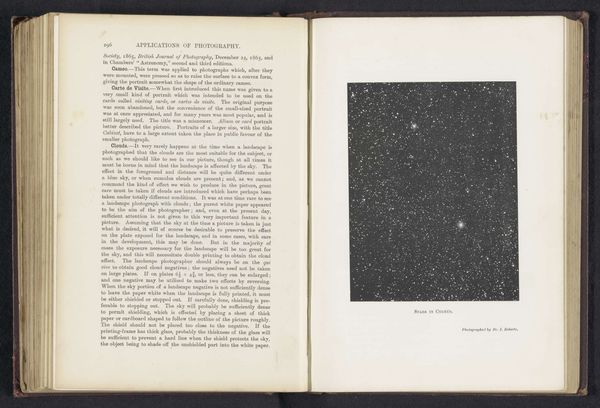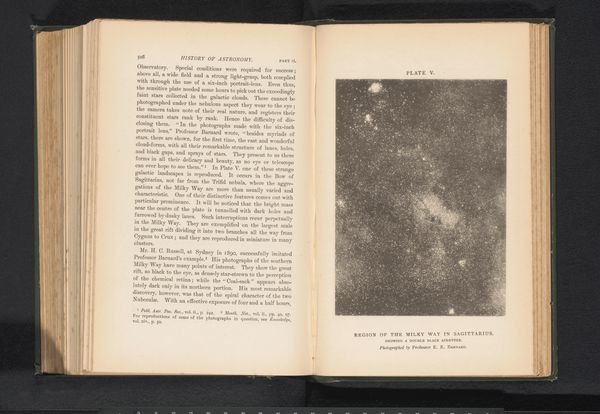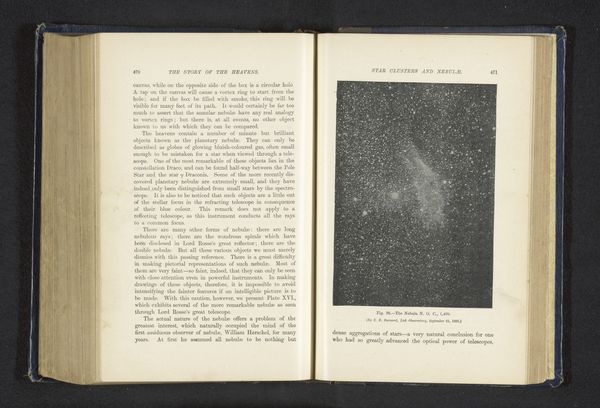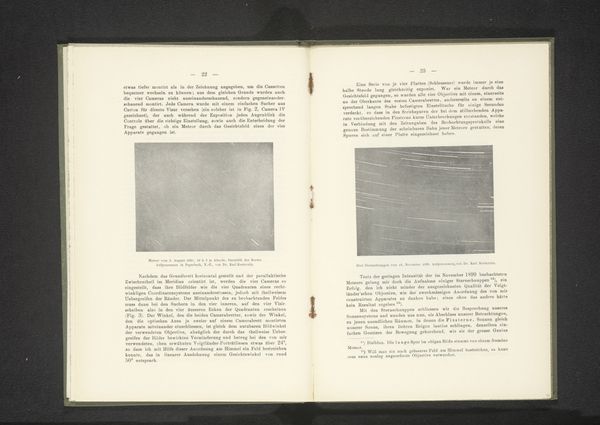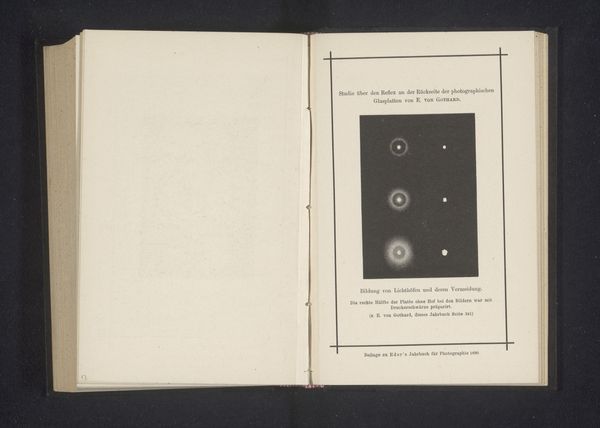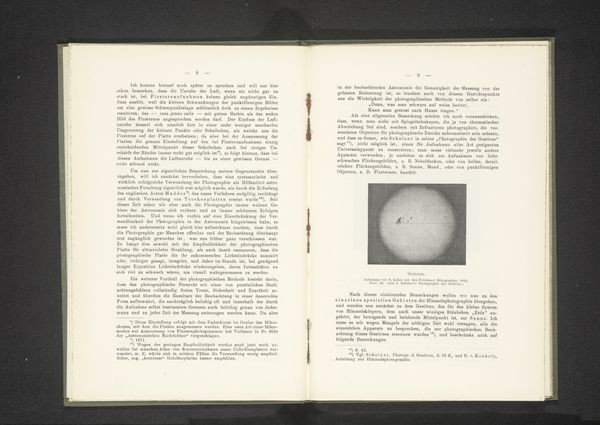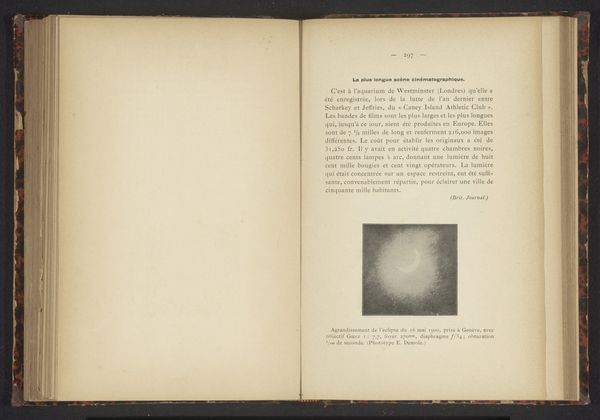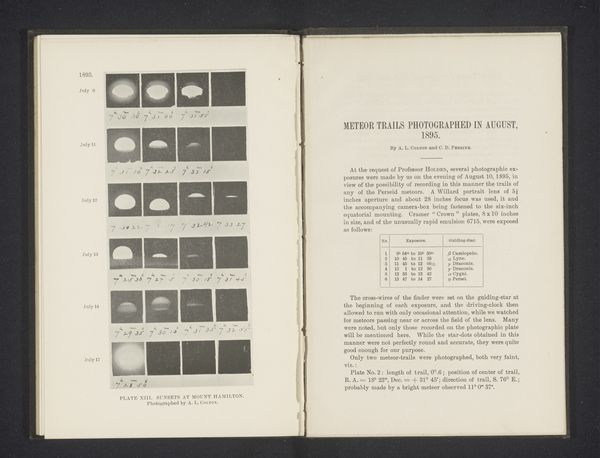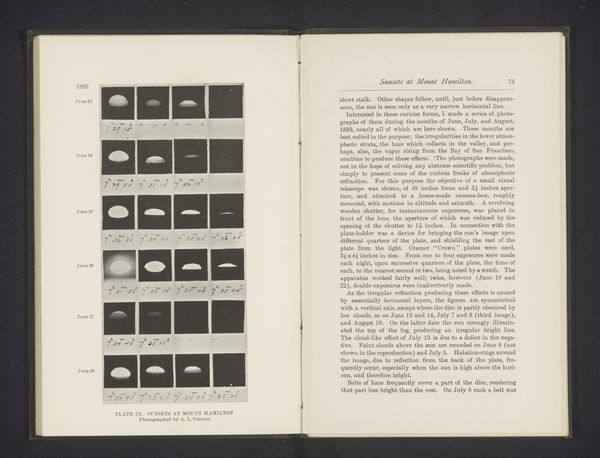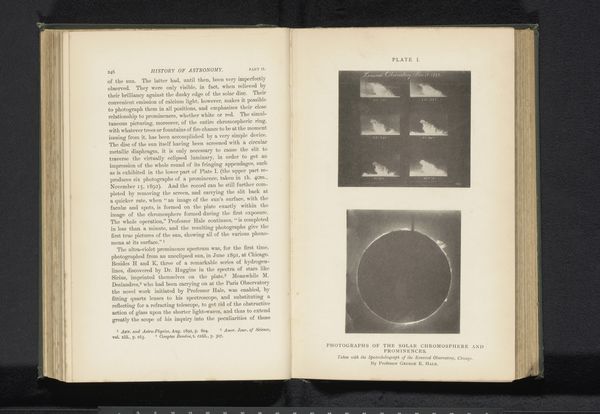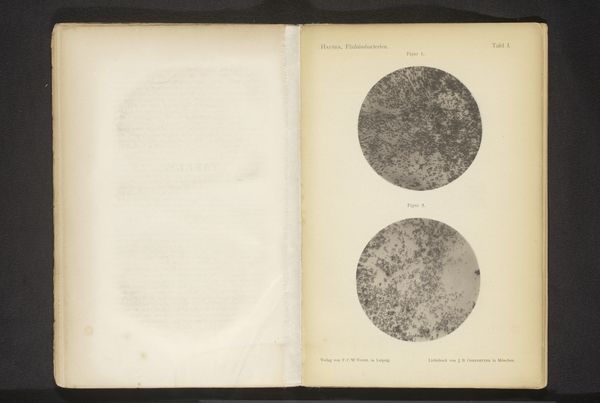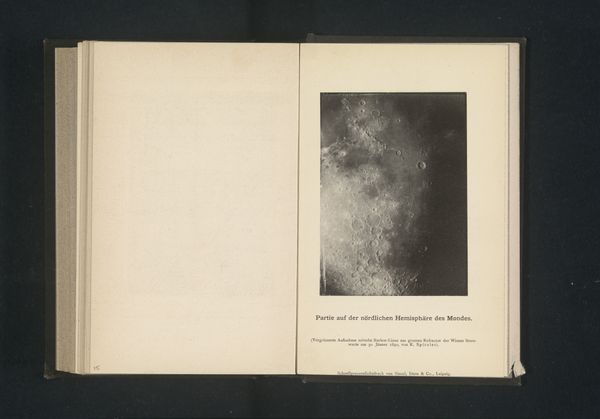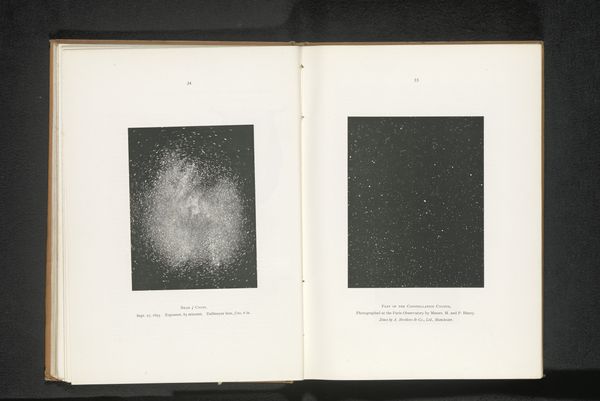
#
aged paper
#
homemade paper
#
paper non-digital material
#
paperlike
#
folded paper
#
thick font
#
letter paper
#
paper medium
#
historical font
#
columned text
Dimensions: height 128 mm, width 147 mm
Copyright: Rijks Museum: Open Domain
Curator: I’m drawn to the open book, its aged paper filled with the wonders of the night sky. Before 1893, M. Henry crafted "Deel van de sterrenhemel," and seeing it now, I am immediately aware of the hands involved. Editor: It feels strikingly intimate, a direct view into the cosmos through a handcrafted lens. There’s a beautiful starkness to the photographic reproduction. The contrast almost makes me think of early astronomical illustrations and the shift towards more ‘objective’ documentation of the universe. Curator: The contrast is partly due to its medium; we’re talking about historical printing techniques on letter paper, and likely, early photographic processes—quite unlike the glossy astronomy books we might see today. The creation of the homemade paper itself—and even the labor implied by the "thick" historical font and columned text—speaks volumes about access to knowledge and the democratization of scientific study. Editor: Exactly. How revolutionary was it to offer star charts, like these reproduced here, more widely to a growing, perhaps more diverse, scientific community? It prompts questions about who had the tools, leisure, and economic resources to engage with the night sky, and how this was shifting toward the end of the 19th century. Was this primarily an exercise available to upper classes only? Curator: Undoubtedly, socio-economic structures deeply influenced who could access and contribute to astronomy. The meticulous columned text suggests painstaking production, revealing layers of human effort and ingenuity beyond simply pointing a telescope. Each print then became a tool that challenged and extended existing power dynamics within the realm of knowledge. Editor: So, beyond its celestial imagery, this aged page embodies a larger story of how scientific observation was evolving and how that impacted the wider world. Thinking of women and the traditionally disadvantaged, it pushes us to examine what access to astronomical tools really meant back then. Curator: Precisely. It is important to think about its physical properties—the paper, the ink, the method of reproduction—they give depth to understanding it’s importance to 19th-century culture. Editor: Ultimately, a quiet yet compelling testament to human curiosity, captured through early photography and the evolving politics of knowledge. It allows us to contextualize and broaden the impact of progress.
Comments
No comments
Be the first to comment and join the conversation on the ultimate creative platform.

